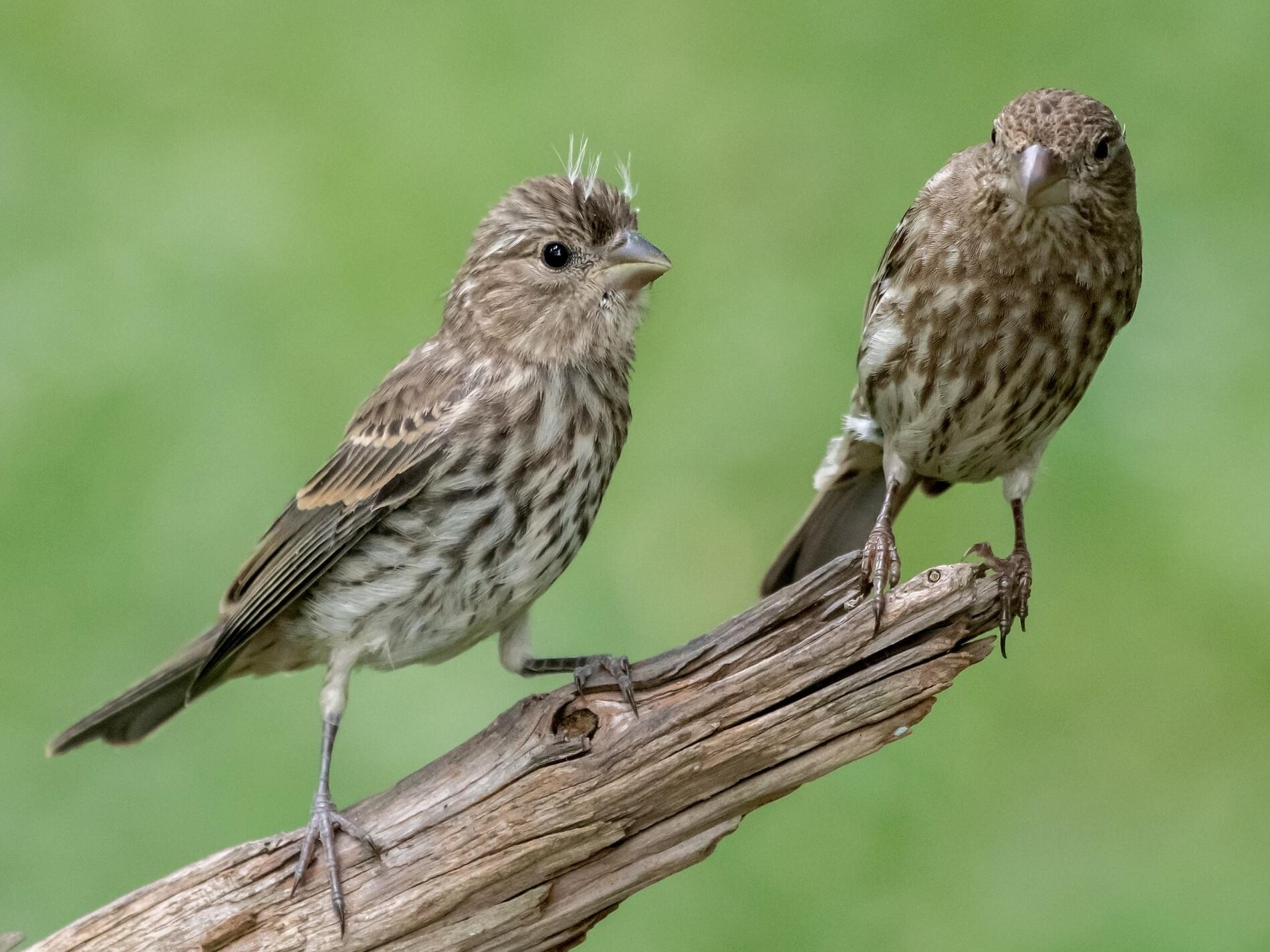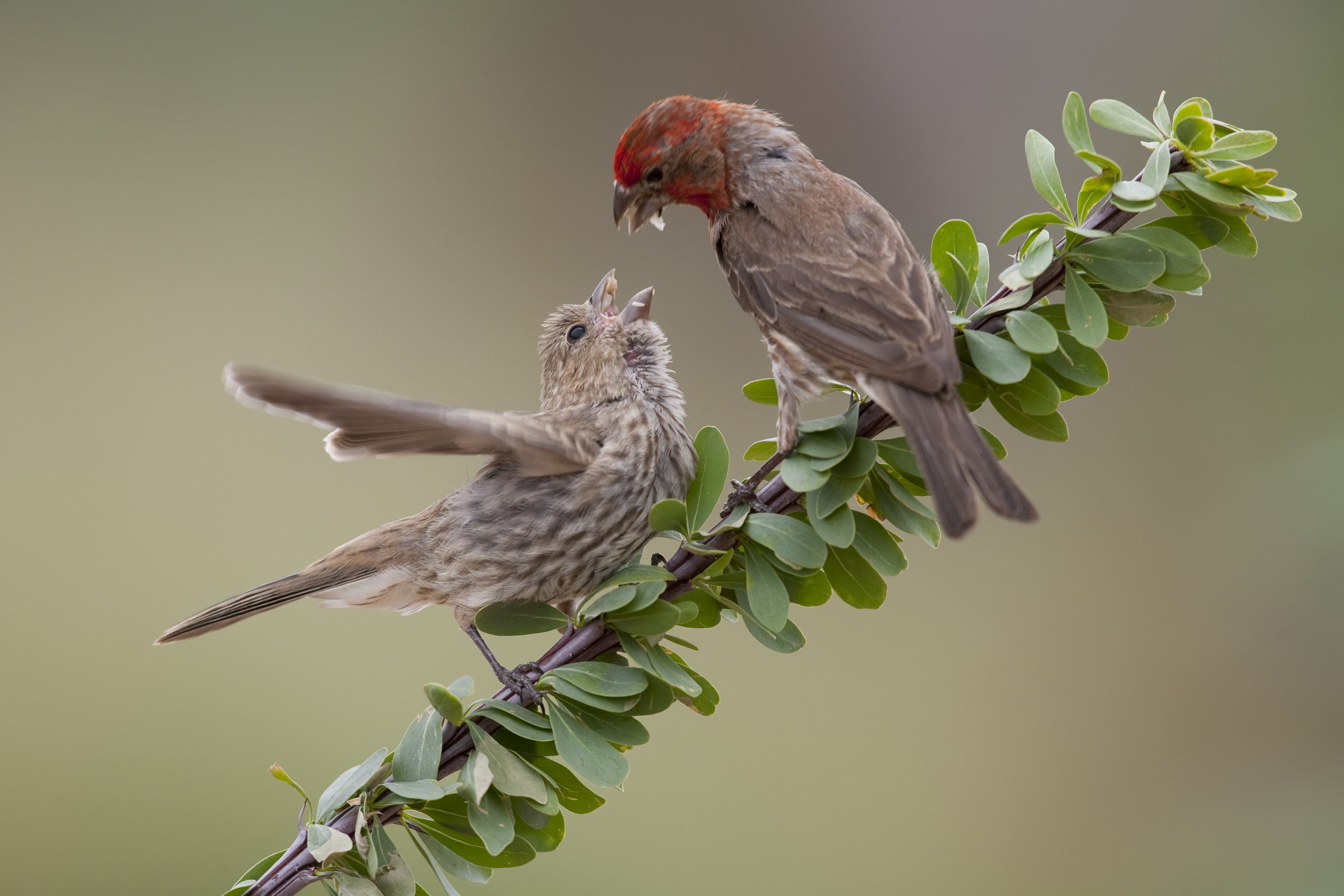Table Of Content

Eating the fruits and flowers of cacti, such as saguaros and ocotillo, allows the finches to get enough liquids without drinking directly. Still, they love water as much as any other species, and a birdbath is likely to draw lots of them to your yard. Plumage coloration ranges from yellow to bright red depending on the amount of carotenoid rich foods they eat; the more carotenoids in food the brighter red they become.
Regional Differences
The first nest of the season generally takes the longest to build. In another days, the fledglings are ready to leave the nest. At this point, the female has already begun preparing for the next clutch. A Heated Birdbath can be a valuable resource during winter for all your feeder birds. The Brown-headed Cowbird often lays its eggs in House Finches nests.
When do House Finches Migrate?
The males either mock feed or regurgitate food in the female's mouth. To supply demand, pet stores in the eastern part of the US were importing this small bird with a redhead from its native home, California. We've made this site to make it easier to learn everything you need to know about your favorite songbird species.
Similar SpeciesPine Siskin
This little bird is highly adaptable and often lives in areas that other birds avoid. They inhabit grasslands, open forests, deserts, and the edges of rivers and ponds, but they also live in more urban areas. House Finches are small birds in the Fringillidae, or “true finch,” family.
If You See a Finch On The East Coast, Thank A Pet Store Owner!
The Cornell Lab will send you updates about birds, birding, and opportunities to help bird conservation. Note plain mostly brown face pattern without pale stripes; also the notched tail. House finches generally lay their first clutch in early March. However, the laying season may continue through August or September.
Originally, this species lived primarily in California, Oregon, Idaho, New Mexico, Mexico, and several surrounding states. Throughout most of their range, these birds are residents year-round. Through human interaction, House Finches now live throughout much of North America. Their range extends from the southernmost reaches of Canada throughout the United States and most of Mexico. A House Finch’s nest is a cup made of fine stems, leaves, rootlets, thin twigs, string, wool, and feathers, with similar, but finer materials for the lining. Overall width of the nest is 3-7 inches, with the inside cup 1-3 inches across and up to 2 inches deep.
What Do House Finches Eat?
Although bird watchers may see the male with nesting material, the female builds the actual nest. The breeding season for House Finches can begin in March and go into August, depending on the success of broods. While adult females look similar to sparrows, there is no such thing as a Red Headed Sparrow or Red Headed Wren. Initially, the House Finch was a bird of the west, but because of its rosy breast and very melodic song, people wanted to own one. The male bird forages for fruits and nuts and then regurgitates its food to its young flock. But regurgitating food is a fast way to deliver nutrients to very young birds.
Is that a wren at my backyard bird feeder? It could be, but it's most likely a female house finch - Berkshire Eagle
Is that a wren at my backyard bird feeder? It could be, but it's most likely a female house finch.
Posted: Wed, 02 Feb 2022 08:00:00 GMT [source]
Some females may find a new mate and raise another brood while the first male continues to feed the young. He does this by regurgitating the seed into the female's beak. During incubation and for about five days after the young have hatched, the male will feed the female in the nest.

Hanging planters, dense ivy, and abandoned farm equipment are other popular options. You can also provide nest boxes if you want to attract house finches to your home. The length of nesting season varies slightly based on what region a house finch is nesting in.
Adult males are rosy red around the face and upper breast, with a streaks down the belly and on the flanks. Many of these eastern birds migrate to the south for the winter (Sauer et al. 2003). In Mexico House Finches are permanent residents south to Oaxaca and Veracruz (Howell and Webb 1995). House finch nests are cup-shaped, containing a mix of plant matter and synthetic materials. On average, nests are constructed with grass stems, leaves, rootlets, thin twigs, other fine plant material, feathers, string, and wool.
Click or tap on the dots on the photos and let them guide you. People don’t generally keep House Finches in zoos simply because they are such common birds. This species is almost exclusively herbivorous, which means that they only eat plants. On rare occasions, a House Finch will munch down an insect larva or small invertebrate, but this only happens every once in a while. Most of the time, these little birds eat seeds, berries, fruits, and budding flowers. House Finches are widespread and common little songbirds.
On average, a pair will produce two successful broods in one nesting season. House finches can lay up to six clutches, but usually, no more than three make it to the fledging stage. Cardinals are beautiful and colorful birds that are often attracted to bird feeders.
Development of the ability to migrate south in winter by House Finches probably facilitated this expansion. By 1992 the western boundary had reached the western edge of southern Minnesota, Iowa, Missouri, and parts of Arkansas, Louisiana, Nebraska and Oklahoma (Hill 1993). Population expansion has continued since then, but more slowly (Sauer et al. 2003). The difference between these birds becomes clear when you compare the adult males. Purple finches are a deep cranberry or raspberry color on most of their body.
When this happens, the eggs may be removed by the Finches or the nest may be abandoned. Some females will begin a second nest just before the first clutch fledges. During courtship, females solicit food from prospective mates.

No comments:
Post a Comment